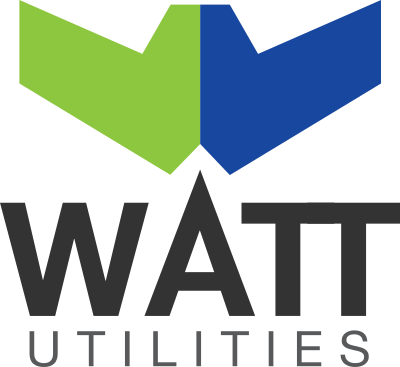
Australian businesses meeting certain size thresholds will soon need to publicly report their climate-related risks, opportunities, and greenhouse gas emissions as part of mandatory annual reporting. The legislation passed in September 2024 requires businesses to disclose how climate change affects their operations, strategy, and financial performance.
The requirements roll out across three groups based on company size. Group 1 entities began their obligations for financial years starting from 1 January 2025, though actual reporting timing depends on each company’s financial year-end. Mid-tier businesses classified as Group 2 start for financial years beginning 1 July 2026, with Group 3 following from 1 July 2027.
For June year-end businesses, this means Group 2 first reports for FY27 (1 July 2026 to 30 June 2027), with reports lodged in late 2027, while Group 3 follows for FY28. Energy consumption data sits at the heart of these requirements because businesses must report Scope 1 and 2 emissions from the first reporting year, with Scope 3 required from year two where data is reasonably available. Starting energy data collection now positions businesses for smoother compliance when obligations begin.
Group classification determines when mandatory reporting begins. Entities required to prepare financial reports under Chapter 2M of the Corporations Act fall into groups based on size criteria.
Group 2 entities meet at least two of these thresholds: consolidated revenue of $200 million or more, consolidated gross assets of $500 million or more, or 250 or more employees at financial year-end. Entities registered under the National Greenhouse and Energy Reporting Act who don’t qualify for Group 1 also fall into Group 2.
Group 3 captures smaller entities meeting at least two of these criteria: consolidated revenue of $50 million or more, consolidated gross assets of $25 million or more, or 100 or more employees. Group 3 entities can claim materiality exemption if they determine no material climate-related risks or opportunities exist, though this still requires formal assessment and documentation.
| Group | Reporting Starts | Size Criteria (meet 2 of 3) |
|---|---|---|
| Group 2 | Financial years from 1 July 2026 | $200M+ revenue OR $500M+ assets OR 250+ employees |
| Group 3 | Financial years from 1 July 2027 | $50M+ revenue OR $25M+ assets OR 100+ employees |
Note: NGER registered entities may have different classification. Asset owners have specific reporting requirements.
The Australian climate disclosure standard requires reporting across four pillars: governance, strategy, risk management, and metrics and targets. Each pillar demands specific disclosures about how climate-related risks and opportunities affect the entity’s cash flows, access to finance, and cost of capital.
Governance disclosures cover board oversight of climate-related risks and management’s role in assessing and managing those risks. Strategy sections require identification of climate-related risks and opportunities over short, medium, and long timeframes, including their impact on business model, strategy, and financial planning.
Risk management disclosures explain processes for identifying, assessing, and managing climate-related risks, and how these integrate with overall risk management. Metrics and targets include Scope 1, 2, and 3 greenhouse gas emissions, along with any climate-related targets and progress against them.
AASB S2 mandates climate scenario analysis to test business strategy resilience. Unlike voluntary frameworks, the Australian standard specifies which scenarios to use: a low warming scenario limiting global temperatures to 1.5°C above pre-industrial levels, and a high warming scenario exceeding 2.5°C.
Scenario analysis examines how different climate futures affect business operations, asset values, and strategic plans, requiring modelling of both transition risks from decarbonisation and physical risks from climate impacts across different temperature pathways.
Energy-intensive businesses face particular challenges in scenario analysis because both pathways create significant implications. Low warming scenarios imply rapid decarbonisation affecting energy costs and availability, while high warming scenarios increase physical risks to operations and supply chains.
Scope 1 and 2 emissions reporting begins in year one of mandatory disclosure. Scope 1 covers direct emissions from owned or controlled sources, while Scope 2 includes indirect emissions from purchased electricity, steam, heating, and cooling.
Scope 3 reporting becomes required from year two where data is reasonably available, creating the most significant data challenge for most businesses. Scope 3 encompasses all indirect emissions occurring in the value chain, including from suppliers, product use, and business travel.
Year one provides time for Scope 3 data collection, but businesses need baseline energy consumption records well before reporting begins. Historical data supports emissions calculations and enables year-on-year comparisons required by the standards.
Accurate energy consumption records underpin emissions calculations for Scope 1 and 2 reporting. Electricity, gas, and fuel purchases convert to emissions using standard factors, so comprehensive consumption data directly determines reported emissions figures.
Many businesses lack organised historical energy data despite having bills on file. Energy management specialists can consolidate and structure this data into formats suitable for emissions reporting, creating the baseline needed for climate disclosures.
Starting this consolidation now, well before reporting obligations begin, identifies data gaps and provides time to implement better tracking systems. Waiting until the compliance year creates unnecessary pressure and increases error risk in reported figures.
The legislation includes transitional modified liability protections for certain disclosures to encourage comprehensive reporting while entities develop systems and processes. For financial years commencing between 1 January 2025 and 31 December 2027, Scope 3 emissions, scenario analysis, and transition plans receive regulator-only enforcement.
During this period, only ASIC can bring civil actions regarding these disclosures, and remedies are limited to injunctions and declarations rather than penalties. Forward-looking statements receive modified liability protection for financial years commencing between 1 January 2025 and 31 December 2025 only.
Some Group 3 entities beginning their first reporting year after 31 December 2027 will not benefit from any modified liability protection for these disclosures. Modified liability doesn’t extend to misleading and deceptive conduct provisions, which remain fully enforceable throughout.
Sustainability reports require external assurance to enhance credibility and accuracy. The Australian Auditing and Assurance Standards Board has released ASSA 5010, which sets assurance requirements for sustainability reports under the Corporations Act.
Limited assurance applies initially, focusing on governance, strategy, and Scope 1 and 2 emissions disclosures in year one. Assurance scope expands progressively, with reasonable assurance required over all disclosures from financial years beginning 1 July 2030.
Auditors will examine underlying data and processes supporting reported figures, so businesses need robust record-keeping systems. Energy consumption data with supporting documentation like bills, meter readings, and consumption records provides auditable evidence for emissions calculations.
Group 2 entities with June 2026 year-ends have until September or October 2027 to lodge their first sustainability report, but preparation needs to start now. The reporting period is FY27, meaning businesses need complete energy and emissions data for the full twelve months from July 2026.
Baseline data from FY26 or earlier provides comparison points and helps identify trends. Scenario analysis requires understanding how business operations would change under different climate futures, which needs detailed energy use patterns as inputs.
Businesses should allocate preparation time across 2025 and early 2026 for governance framework development, data system implementation, scenario analysis planning, and initial emissions calculations using historical data.
Consolidate historical energy bills and consumption data. Identify data gaps and implement tracking systems for comprehensive coverage across all sites and energy sources.
Establish board oversight processes for climate-related risks. Define short, medium, and long-term timeframes for risk assessment. Begin scenario analysis planning.
Calculate Scope 1 and 2 emissions using historical data. Identify Scope 3 categories relevant to operations. Establish emissions calculation methodologies and documentation processes.
Implement ongoing data collection systems. Develop internal controls for sustainability reporting. Engage external auditors for pre-assurance reviews.
Climate disclosure preparation overlaps significantly with strategic energy management. Businesses need detailed consumption data for both emissions reporting and identifying cost reduction opportunities through improved energy efficiency.
Energy procurement strategies affect reported emissions and scenario analysis outcomes. Contract structures, renewable energy purchasing, and demand management all influence how businesses perform under different climate scenarios modelled in disclosure requirements.
Integrating energy strategy development with climate disclosure preparation creates efficiency gains. The same consumption analysis supports both compliance and commercial objectives, while scenario planning informs long-term contract decisions and capital investment priorities.
Group 3 entities can avoid full sustainability reporting if they determine no material climate-related risks or opportunities exist. However, this determination requires formal assessment against AASB S2 criteria, not casual judgment.
Materiality assessment examines whether climate-related matters could reasonably affect the entity’s cash flows, access to finance, or cost of capital over short, medium, or long term. Energy costs, physical climate risks to operations, and transition risks from decarbonisation all factor into this evaluation.
Even when claiming materiality exemption, entities must disclose a statement explaining why no material climate risks or opportunities exist, requiring documented rationale that withstands external review. Many businesses will find material climate-related matters exist when conducting proper assessment, making full reporting necessary.
Businesses operating multiple locations face additional complexity in climate disclosure preparation. Consolidated reporting covers the entity and all controlled subsidiaries, requiring comprehensive data across the entire corporate group.
Energy consumption varies significantly between sites based on operations, equipment, and building characteristics. Aggregating this data accurately requires systems that track consumption at site level while rolling up to consolidated totals for reporting purposes.
Energy management platforms that handle multi-site data become valuable tools for climate disclosure preparation. The same systems supporting procurement and cost management can generate emissions reports and track performance against reduction targets.
Scope 3 reporting from year two creates upstream pressure on supply chains. Large entities reporting Scope 3 emissions will request data from suppliers about their energy use and emissions, extending disclosure requirements beyond directly captured entities.
Businesses below Group 3 thresholds may still need to provide emissions data to customers or partners subject to mandatory reporting. Having energy consumption records and emissions calculations ready positions smaller businesses to respond to these requests efficiently.
Value chain emissions represent the largest component of Scope 3 for most businesses, so early engagement with key suppliers about their energy use and emissions supports more accurate disclosure when mandatory reporting begins.
Directors face liability exposure for sustainability reports under the existing framework applying to corporate reporting obligations. During the modified liability period, directors must declare they’ve taken reasonable steps to ensure compliance rather than the stricter standard applying to financial reports.
After the modified liability period expires, full liability for misleading or deficient climate disclosures resumes under standard Corporations Act provisions and ASIC oversight. This makes proper preparation during transition years critical for establishing robust processes before full liability applies.
Board-level governance of climate-related risks needs formal structures before reporting begins, including committee oversight, management reporting lines, and regular review of climate-related matters in board discussions.
Businesses approaching Group 2 or 3 thresholds should begin climate disclosure preparation immediately. First steps include confirming classification, consolidating historical energy data, and establishing who will coordinate preparation efforts internally.
Energy data forms the foundation, so working with specialists who understand both compliance requirements and energy management creates dual benefits. Preparation activities that support climate disclosure also identify cost reduction opportunities and inform strategic planning.
The window for preparation narrows as reporting dates approach. Starting now provides time to build robust systems, address data gaps, and develop processes that support ongoing compliance rather than last-minute scrambling before deadlines.
Our energy specialists help businesses consolidate consumption data, calculate baseline emissions, and develop energy strategies that support both compliance and cost management objectives. Get started on climate disclosure preparation with expert support.
Start Preparation
Disclaimer
This article provides general information about climate disclosure requirements under Australian law. It does not constitute legal, accounting, or compliance advice. Climate reporting obligations and thresholds are subject to regulatory guidance and may change. For specific advice about your reporting obligations and compliance preparation, consult legal and accounting professionals alongside energy management specialists. Contact our team for energy data and strategy support.



Fields marked with * are required.

Fields marked with * are required.